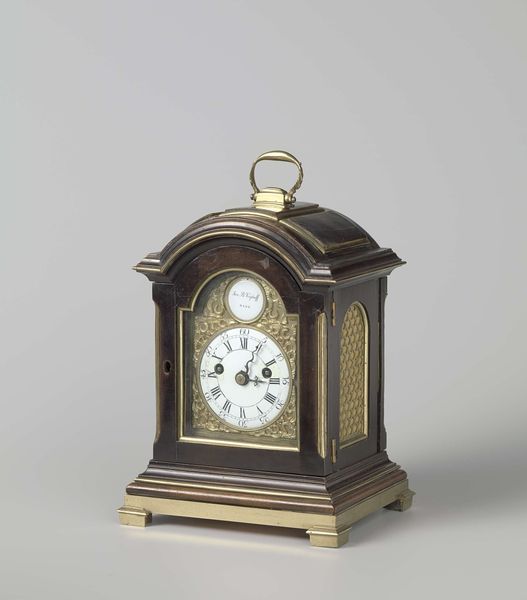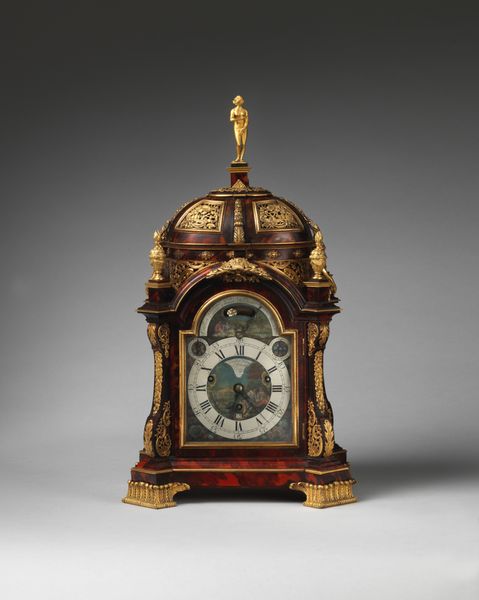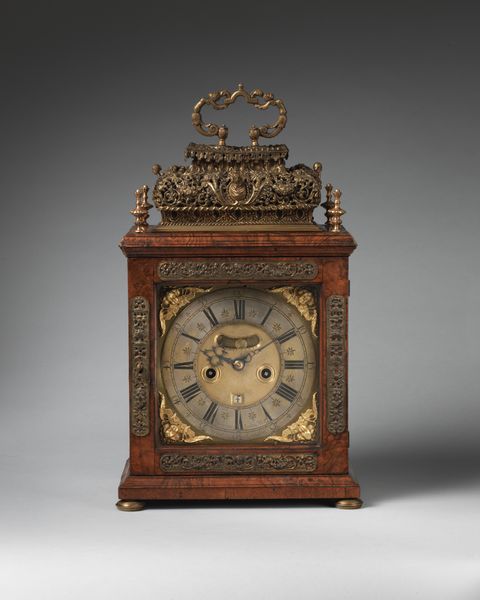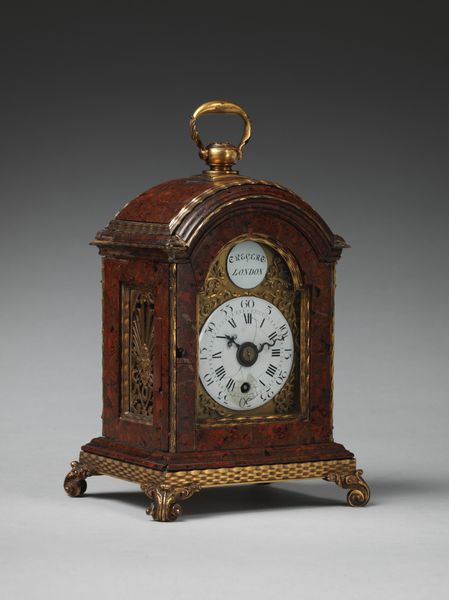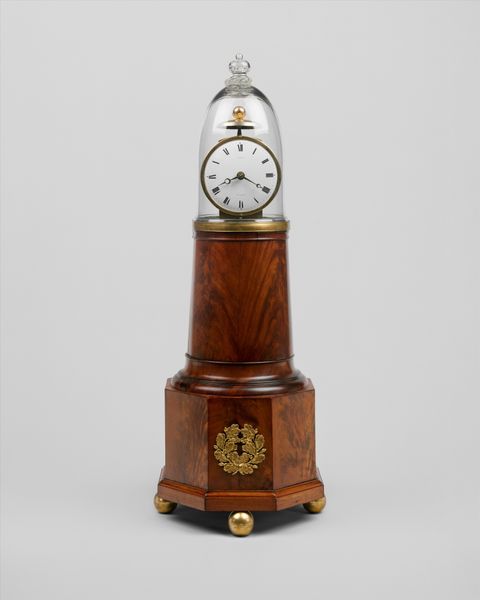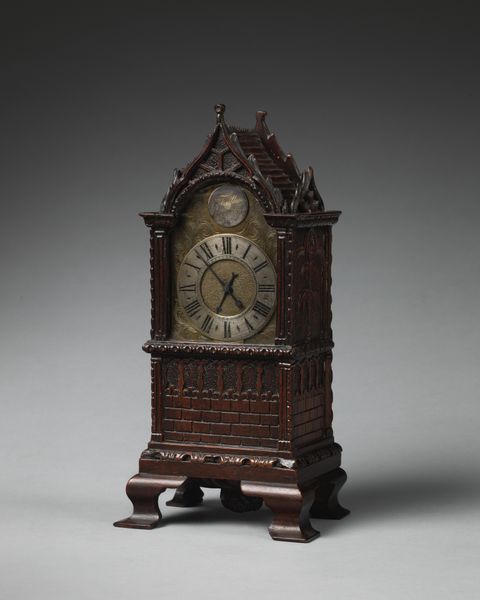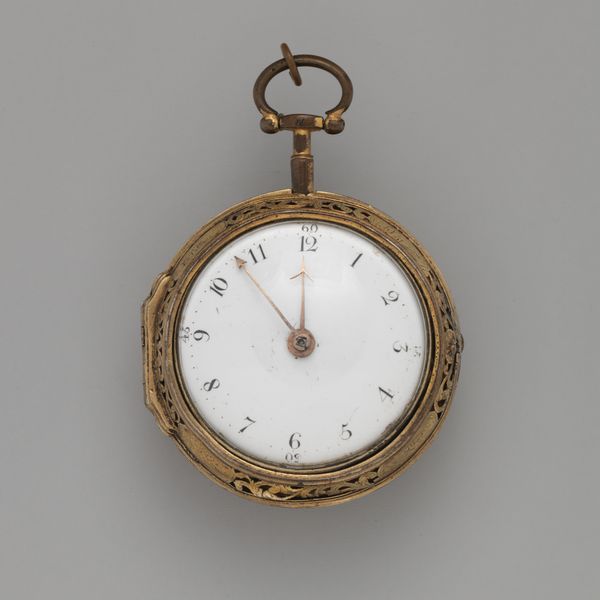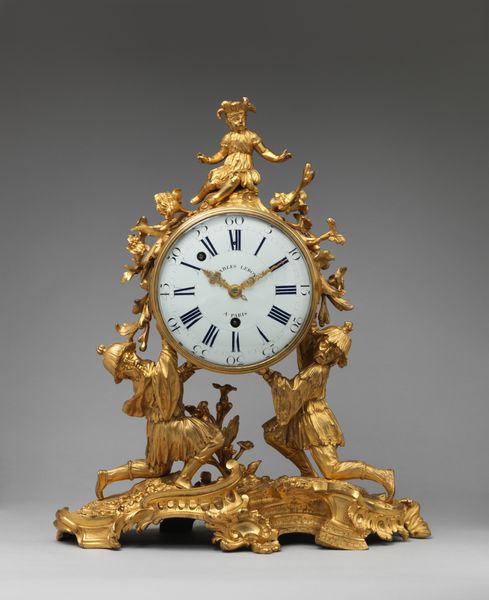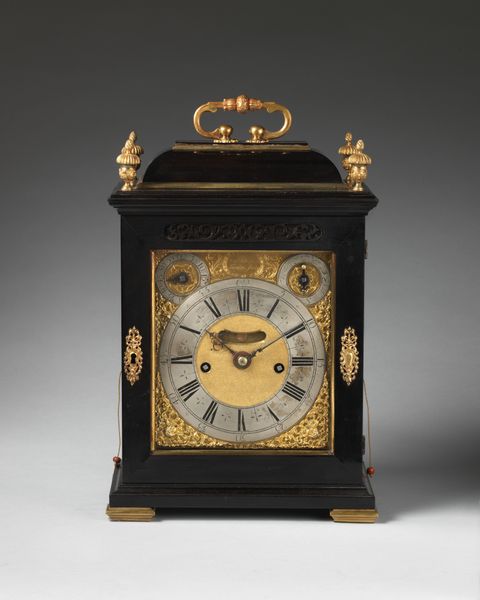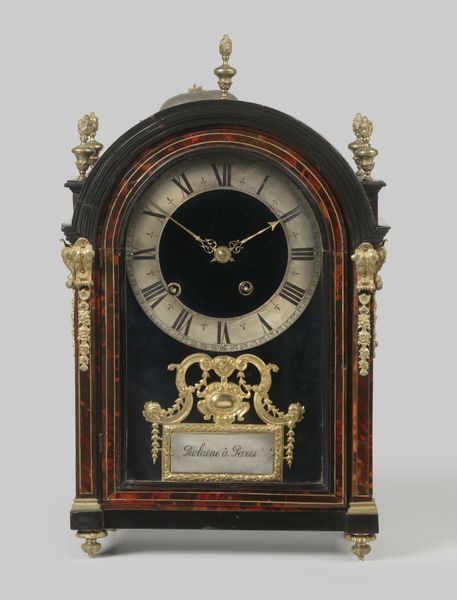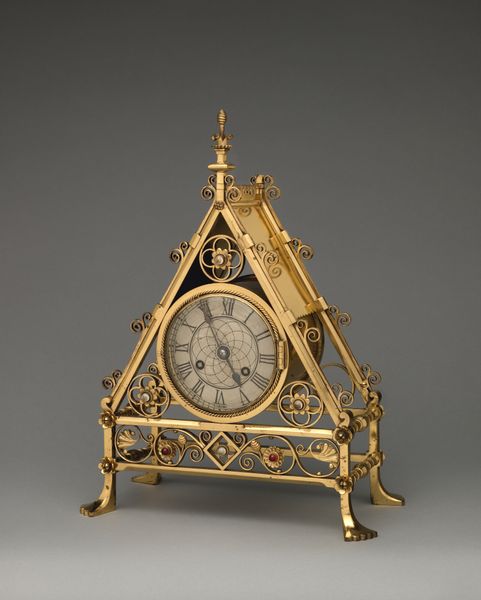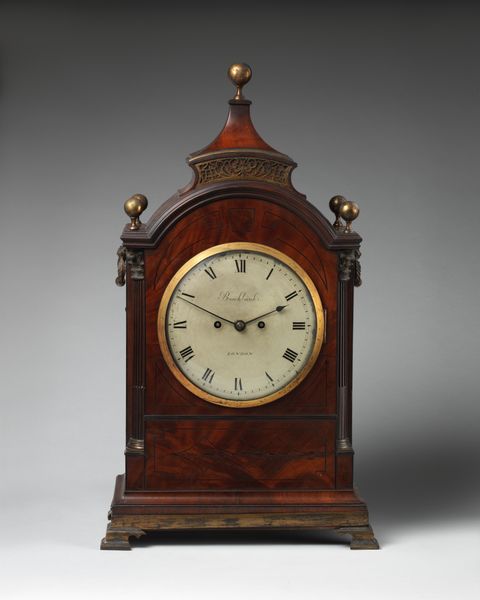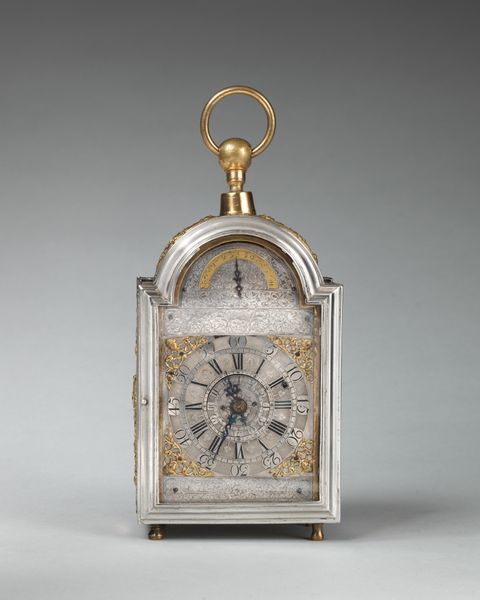
Dimensions: 8 7/16 × 5 1/4 in. (21.4 × 13.3 cm)
Copyright: Public Domain
Editor: Here we have the “Boudoir Clock,” a decorative bronze sculpture from the late 18th century created by the Firm of Jaquet-Droz & Leschot. Its baroque style and striking light-blue color make me think of luxury. What catches your eye? Curator: What I see is a carefully constructed set of cultural aspirations reflected through visual symbols of wealth, status, and an understanding of "good" taste. The pearls around the clockface aren't merely decorative, they indicate access. And look at the color -- a delicate *bleu celeste*. What do you know of the symbolic implications of Rococo blue? Editor: I remember learning something about it representing fidelity... something like that? Curator: Indeed! And heavenly grace, depending on the shade and context. Consider the garlands: those are a potent symbol of leisure, referencing the *fêtes champêtres* of the aristocracy, which filtered down into bourgeois culture. A lady would’ve placed it in her boudoir, right? What else might be revealed if we think about that location? Editor: Perhaps her status is reinforced through ownership? And by controlling her own time within the domestic sphere, she's exhibiting a particular form of power? Curator: Exactly. And think about how easily portable it is; not fixed like a grandfather clock, but ready to travel with its owner, to maintain appearances... to keep up with social expectations. A clock, reminding you always of Time's fleeting passage... What do you make of that small detail now? Editor: Wow, that completely reframes my initial impression! It’s so much more complex than just a pretty object. Now I am aware of its cultural weight. Curator: Absolutely! The beauty of such objects lies in their cultural resonance, linking aesthetic pleasure to intricate networks of meaning.
Comments
No comments
Be the first to comment and join the conversation on the ultimate creative platform.
